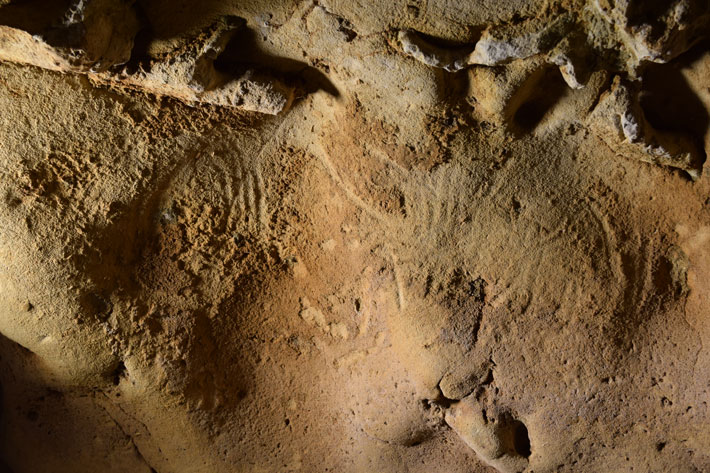 TOURS, FRANCE—Non-figurative engravings discovered in central France in the cave of La Roche-Cotard may have been made by Neanderthals, according to a Live Science report. The markings include more than 400 abstract lines and dots spread out over eight panels. Researchers led by Jean-Claude Marquet of the University of Tours tested how the marks could have been made by attempting to recreate them on the rock of a similar cave with their fingers, bone, wood, antler, flint, and metal points. They then recorded the new marks with hundreds of photographs, and made virtual 3-D models of them to compare with virtual 3-D models of the prehistoric engravings. The study suggests that the modern engravings made with fingers were the most similar to the originals. The researchers also noted that they could not link the cave’s stone tools, of a type usually associated with Neanderthals, to the engravings. Optically stimulated luminescence dating of sediments in the cave indicates that it was sealed up at least 57,000 years ago, and possibly as long as 75,000 years ago, making it highly unlikely that modern humans could have created the markings. Modern humans are thought to have arrived in what is now France about 54,000 years ago. Read the original scholarly article about this research in PLOS ONE. To read about an artistic design found in a cave in Gibraltar, go to "Symbolic Neanderthals."
TOURS, FRANCE—Non-figurative engravings discovered in central France in the cave of La Roche-Cotard may have been made by Neanderthals, according to a Live Science report. The markings include more than 400 abstract lines and dots spread out over eight panels. Researchers led by Jean-Claude Marquet of the University of Tours tested how the marks could have been made by attempting to recreate them on the rock of a similar cave with their fingers, bone, wood, antler, flint, and metal points. They then recorded the new marks with hundreds of photographs, and made virtual 3-D models of them to compare with virtual 3-D models of the prehistoric engravings. The study suggests that the modern engravings made with fingers were the most similar to the originals. The researchers also noted that they could not link the cave’s stone tools, of a type usually associated with Neanderthals, to the engravings. Optically stimulated luminescence dating of sediments in the cave indicates that it was sealed up at least 57,000 years ago, and possibly as long as 75,000 years ago, making it highly unlikely that modern humans could have created the markings. Modern humans are thought to have arrived in what is now France about 54,000 years ago. Read the original scholarly article about this research in PLOS ONE. To read about an artistic design found in a cave in Gibraltar, go to "Symbolic Neanderthals."
Neanderthals May Have Created Cave Art in France
